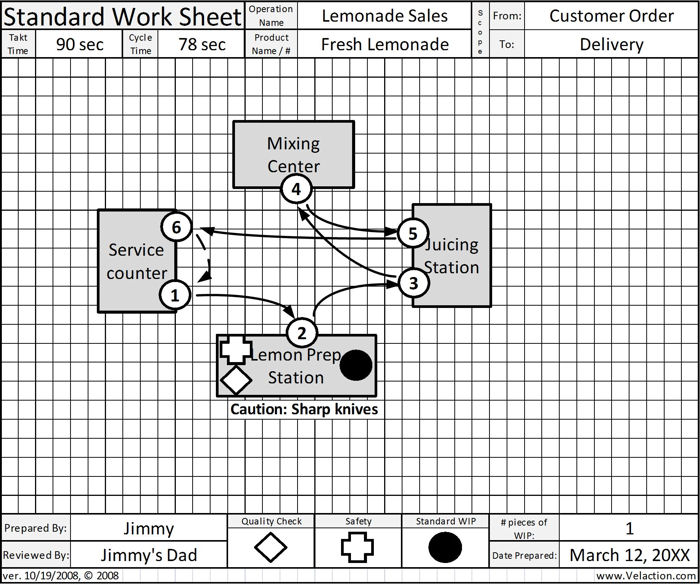Work, Standard
Standard Work is one of the core tools for Lean. It is most appropriate for use in repetitive, shop floor work areas, but can be modified to be used effectively in less structured work flows as well as in the office. Standard work has three main components. A prescribed sequence of operations… …balanced to the takt time Defined standard work-in-process

